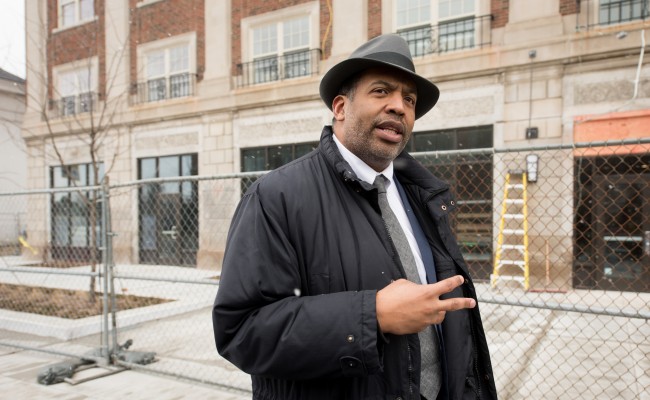An old concept is getting new attention among various developers in Detroit and nationally.
Mixed income housing is regaining interest as communities work to pick up the pieces left behind after the past decade’s mortgage crisis and as members of the corporate and private sector search for fertile ground in struggling urban cities.
With Detroit adjusting to a changing real estate climate and the related influx of residents from other zip codes, questions are being raised about how to best ensure equity in neighborhoods while encouraging investment. Among the questions:
- How does the city create a thriving housing market in areas where homes aren’t selling well?
- Where might development be profitable in less-charted territory?
- What can be done to increase commercial investment in Detroit’s core neighborhoods?
- Can strategic placement of mixed-income housing create “development bridges” to propel growth between stable and fringe neighborhoods?
Stakeholders, like the city’s Housing and Revitalization Department, offer mixed residential development as one answer. Director Arthur Jemison says $4 million of federal Housing and Urban Development (HUD) funds was funneled into the Strathmore apartments, which will contain 52 “affordable” housing units out of 129 when it opens in March.

“Detroiters need all kinds of housing, but one of the kinds they don’t always have is housing that’s close to jobs, housing that’s close to transit, and housing that’s in a walkable district,” says Jemison.
Formerly a hotel at Alexandrine and Woodward, the Strathmore was closed about 10 years ago and sat vacant. The revitalization project is supported by the Ford, Hudson-Webber and Kresge Foundations. Midtown Detroit Inc. is a co-developer. Jemison says Strathmore’s location in Midtown, which is becoming known for expense and cries of gentrification, ensures amenities for lower-income residents who’ll live there.
“With enough investment resources, we can keep Detroit affordable forever.” -Arthur Jemison, Director, City of Detroit Housing & Revitalization
While today’s Midtown is seldom associated with affordable living like Section 8 or other income-based leasing in the city, Jemison says HUD originally had properties on streets like Brush and John R in the area. The city’s challenge in areas of intense development is to preserve or create affordable units, sometimes against opposition.
“Some of it’s persuasion, some of it’s jurisdiction,” says Jemison.
Many older residential buildings in Detroit and in urban communities throughout the country have been rental assistance contracts that are renewable and subject to expiration after about 40 years. Housing in major cities like Dallas and Miami are reportedly near the end of HUD terms. When current building owners learn they have options to go market-rate, or even inflate rental costs, affordable housing can be the last thing on their minds, so the city steps in to present options like renewed HUD funding, in exchange for keeping costs low, Jemison says.
When necessary, officials might use appropriate and legal pressures to influence cooperation, such as reminding a delinquent property tax owner of his or her debt.
“It’s the city exercising its rights,” Jemison says.
PROFIT POTENTIAL
Detroit real estate owner Jason Dean, who oversees J.S. Dean Property Management with his wife Susana, says smart developers don’t need their arms twisted to support affordability. Including market-rate apartments like downtown’s renovated attraction, Broderick Towers, J.S. Dean manages 1,500 units in 13 city locations and owns 200 units, 30 percent of which are mixed income.

“Mixed-income housing, from my perspective, makes a more stable neighborhood,” Dean says. “In impoverished neighborhoods, you have people who can’t afford much, so the neighborhood doesn’t have much in it. It doesn’t have a gym. It doesn’t have a theater. When nothing’s there it can become a slum.”
Conversely, mixed-income housing is a magnet for commercial development that translates to thriving communities.
“It creates more opportunities for jobs when there are businesses right around the corner from where you live,” Dean says. “It also creates a workforce for the owner, because they can say, ‘Hey, I’ll put my business here.’”
Dean has witnessed the formula work at various levels in his hometown San Diego. While the city has affluent sections like La Jolla, there’s strikingly less segregation by income, compared with Detroit neighborhoods, he says.
Collective research suggests that strategically placed mixed-income property developments have the potential to attract retail investment and employment.

In Chicago, the majority of new mixed income housing developments have large retail anchor support attached to them, according to Eugene E. Jones Jr., the CEO of Chicago Housing Authority (CHA), who says the model “works.”
“We’re creating value, reducing crime, and providing economic opportunities for commercial activity,” says Jones, who headed the Detroit Housing Commission-led efforts to develop Emerald Springs apartments, Gardenview (formerly Herman Gardens) and Cornerstone Estates (formerly Jefferson East Projects).
Making the same neighborhoods attractive to those who can afford little and those who can afford much involves “best practices” and demonstrating similar housing that has worked.
Other challenges to mixed income housing that relate to general cost of living in Detroit.
Matthew B. Elliott, Bank of America’s Michigan Market president, says affordable leasing can be a stepping stone for smart investors.

“From a development point of view it’s easier to start in rental and develop toward condominiums and ownership.”
There’s also local evidence of a connecting-dots approach between residential and commercial development. Southwest Detroit’s Vista Partnership initiative, which began two years ago with a Skillman Foundation grant, engaged 700 neighbors who expressed desires for nearby entertainment and other attractions. The push, designed around a 20-block span, contributed to growth of residential and commercial buildings in the area from 42 percent occupancy 12 years ago to 82 percent occupancy today, according to Southwest Solutions.
“Mixed-income housing developments need to be undertaken with the ultimate goal of stabilizing neighborhoods ahead of profit-driven concerns,” says Jones. “When we stabilize a neighborhood through strategic support of mixed-income housing, retail development and employers ─ profitability will follow. It’s a market-driven scenario proven out across the U.S.
With added support and the right concentration of private and public funding behind them, strategic mixed income housing developments are beginning to stabilize formerly unhealthy neighborhoods and even driving spin-off developments, according to Tahirih Ziegler, executive director of Detroit’s Local Initiatives Support Corp (LISC).

“Lessons can be learned from both the success of developments that stimulate business investment and their failures to integrate the less financially privileged, says Ziegler.
“We think it’s important that we don’t congregate poverty into certain areas, so we want to have people of different incomes living together,” Ziegler says.
Among families auto insurance, homeowners insurance and related issues are barriers to home ownership, so affordable rent dwellings are needed as an alternative.
“Convening agencies” like community development corporations and similar neighborhood non-profits must help lead the charge, rather than leaving the plight of residents to private real estate, says Ziegler.
The right starting point is important, according to Ziegler, who believes that mixed-income and related retail development would be well-placed in the areas of: Jefferson-Chalmers, Warrendale, Boston-Edison, and Grandmont Woodward (traditionally known as Detroit’s “north end”)
ECONOMIC DIVERSITY
But while there seems to be a harmonious chorus among most neighborhood advocates about mixed income living, Ted Phillips is cynical.
“The problem with mixed-income housing is it’s usually bandied about by people who have no interest in mixed income housing,” says Phillips, executive director of Detroit’s United Community Housing Coalition.
Calls for residential economic diversity date back to Bill Clinton’s presidency, but while he supports the principle, Phillips says it’s too rarely executed.
“Over 30 years I have asked the question to planners, ‘What percentage of low-income people would a developer find acceptable in a mixed income community?’ Is it 10 percent, is it 20 percent, is it 30 percent?’ Every time I ask that question I get blank stares,” he says.
Equitable provisions in low-income neighborhoods can offset their decline, compared with wealthier, high-investment areas, Phillips says. Childcare support for residents “so they’re not spending 50 percent of their wages on babysitting” might be a program provided to economically disadvantaged residents, and job training might be another, he says.
“I don’t think, just because you have 100-percent low-income housing, that you have to have all the god-awful stereotypes that come with it.”
There’s apparent need for continued support to low-income Detroiters, as the city ranks among America’s most “cost-burdened” renters, according to ApartmentList.com.
Still others, like Joel Heeres, cringe at the thought of more economic isolation in their neighborhoods. Heeres, president of the Woodbridge Citizens District, which helps represent the general Woodbridge community, says Woodbridge Estates is an exception in the landscape.
“The division between a concentrated low-income area and a concentrated middle income area is a concern,” he says.
A HEALTHY RETURN
For his part, Mayor Mike Duggan has advocated economic housing diversity, welcoming newcomers, but insisting those who’ve weathered Detroit’s storms be allowed to enjoy its resurgence, says city spokesman Dan Austin.

Long-tenured homeowners stand to gain from affordable initiatives, due to the potential of increased neighborhood value. “People’s home values have been the way they’ve gotten wealth from generation to generation,” says Housing and Revitalization’s Jemison. “We want Detroiters to hang in there and look for the wealth to return. One of the ways we can help bring that wealth back is to bring the value back into their homes.”
Creating a new class of owners is also the mission, and the city plans 20 percent affordable houses for development through Detroit Land Bank in the Live6 initiative, targeting Livernois-McNichols neighborhoods.
“With enough investment resources,” Jemison says, “we can keep Detroit affordable forever.”
Photos by Paul Engstrom



People on your newsletter must love you. This content is pure 100% gold